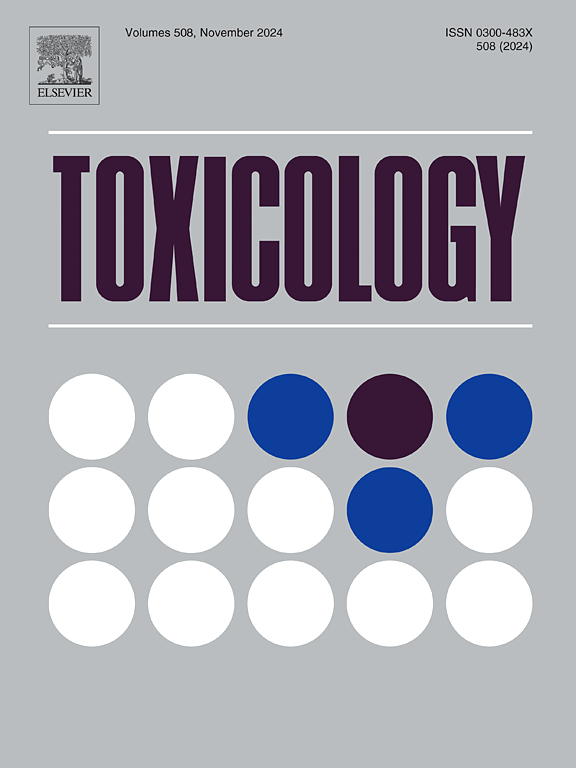Deciphering the quantitative relationship between NRF2 and SRXN1 through semi-mechanistic computational modeling
IF 4.6
3区 医学
Q1 PHARMACOLOGY & PHARMACY
引用次数: 0
Abstract
Nuclear factor erythroid 2-related factor 2 (NRF2) plays a vital role in the regulation of various antioxidant response element (ARE) genes, which control physiological processes such as oxidative stress, autophagy, proliferation and apoptosis to maintain cellular homeostasis. It is not understood in detail how the NRF2 program acquires its flexibility with respect to regulation of its downstream targets. Various NRF2 binding partners and cofactors specific to ARE genes are involved in this regulation, and are potentially condition-specific (e.g., type of stressor) and dependent on non-canonical signaling pathways (i.e., crosstalk). Here, we explored the quantitative relationship between NRF2 and sulfiredoxin 1 (SRXN1), a bona fide key NRF2 target gene. We developed a semi-mechanistic mathematical model based on time course experimental data of NRF2 and SRXN1 protein expression in HepG2 cells following single or repeated exposure to NRF2 activating soft electrophiles (sulforaphane, andrographolide, ethacrynic acid or CDDO-me) at a wide concentration range. We showed that a nonlinear mixed effect modeling approach with partially hierarchical parameters accurately captures the observed experimental dynamics. Our analysis highlights that NRF2 requires a cofactor or post-translational modification to regulate its activity as a transcription factor. Moreover, this modulation of the transcription factor activity of NRF2 is time-, compound- and exposure scenario specific. We conclude that a complete understanding of NRF2-mediated ARE genes activation requires detailed dynamic information on NRF2 binding partners and cofactors.
通过半机械计算模型解读NRF2与SRXN1之间的定量关系。
核因子红细胞2相关因子2 (NRF2)在调控各种抗氧化反应元件(ARE)基因中起着至关重要的作用,这些基因控制氧化应激、自噬、增殖和凋亡等生理过程,维持细胞稳态。目前还不清楚NRF2程序是如何获得对其下游目标调节的灵活性的。ARE基因特有的各种NRF2结合伙伴和辅助因子参与了这种调节,并且可能是条件特异性的(例如,应激源的类型),并依赖于非规范信号通路(即串扰)。在这里,我们探索了NRF2与硫氧还蛋白1 (SRXN1)之间的定量关系,SRXN1是NRF2真正的关键靶基因。我们建立了一个半机械的数学模型,基于NRF2和SRXN1蛋白表达的时间过程实验数据,在单次或多次暴露于NRF2激活软亲电试剂(硫素、心花内酯、乙酸或CDDO-me)后,HepG2细胞在大浓度范围内表达。我们证明了采用部分分层参数的非线性混合效应建模方法可以准确地捕捉到观察到的实验动态。我们的分析强调NRF2需要一个辅助因子或翻译后修饰来调节其作为转录因子的活性。此外,NRF2转录因子活性的这种调节是时间、化合物和暴露场景特异性的。我们得出结论,要完全了解NRF2介导的ARE基因激活,需要NRF2结合伙伴和辅因子的详细动态信息。
本文章由计算机程序翻译,如有差异,请以英文原文为准。
求助全文
约1分钟内获得全文
求助全文
来源期刊

Toxicology
医学-毒理学
CiteScore
7.80
自引率
4.40%
发文量
222
审稿时长
23 days
期刊介绍:
Toxicology is an international, peer-reviewed journal that publishes only the highest quality original scientific research and critical reviews describing hypothesis-based investigations into mechanisms of toxicity associated with exposures to xenobiotic chemicals, particularly as it relates to human health. In this respect "mechanisms" is defined on both the macro (e.g. physiological, biological, kinetic, species, sex, etc.) and molecular (genomic, transcriptomic, metabolic, etc.) scale. Emphasis is placed on findings that identify novel hazards and that can be extrapolated to exposures and mechanisms that are relevant to estimating human risk. Toxicology also publishes brief communications, personal commentaries and opinion articles, as well as concise expert reviews on contemporary topics. All research and review articles published in Toxicology are subject to rigorous peer review. Authors are asked to contact the Editor-in-Chief prior to submitting review articles or commentaries for consideration for publication in Toxicology.
 求助内容:
求助内容: 应助结果提醒方式:
应助结果提醒方式:


